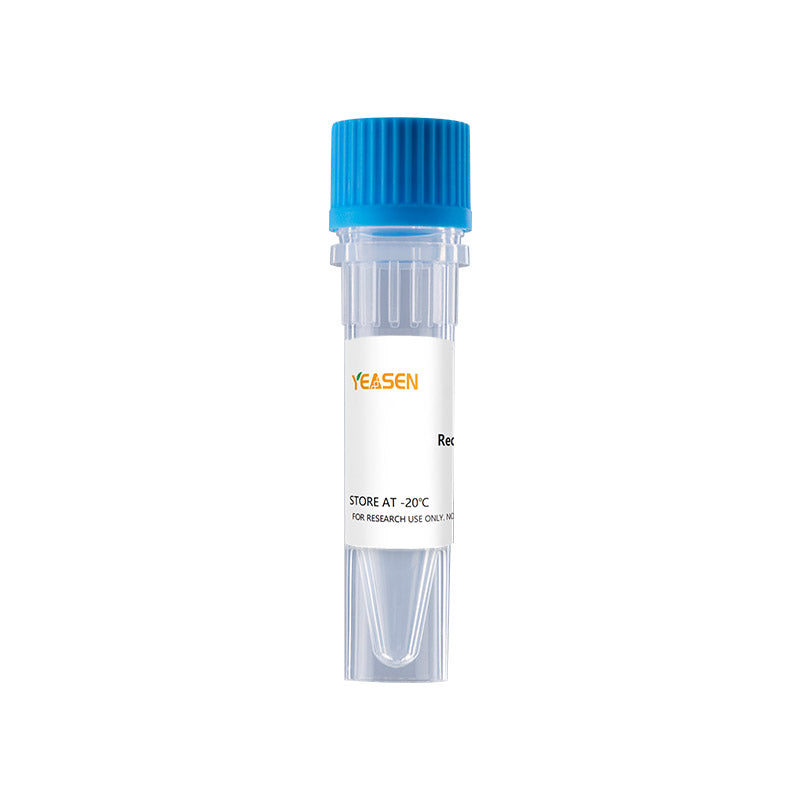Description
Mouse Lungkine/CXCL15, also named WECHE, is a member of the ELR motif-containing CXC chemokines. Mouse Lungkine shares 35% aa sequence identity with human ENA-78 and 31% identity with human IL-8. CXCL15 is a novel CXC chemokine that is highly expressed in the adult mouse lung. CXCL15 has suppressive activity on proliferation and expansion of multi-potential, erythroid, granulocyte and macrophage progenitors in S-phase specific manner. Lungkine protein is secreted into bronchoalveolar space and is involved in lung-specific neutrophils trafficking. Lungkine is also chemotactic for bone marrow progenitor cells and modulates hematopoietic cell differentiation.
Product Properties
|
Synonyms |
CXCL15, Il8, IL-8, Lungkine, Scyb15, Weche |
|
Accession |
|
|
GeneID |
|
|
Source |
E.coli-derived mouse Lungkine/CXCL15 protein, Gln26-Ala167. |
|
Molecular Weight |
Approximately 16.4 kDa. |
|
AA Sequence |
QELRCLCIQE HSEFIPLKLI KNIMVIFETI YCNRKEVIAV PKNGSMICLD PDAPWVKATV GPITNRFLPE DLKQKEFPPA MKLLYSVEHE KPLYLSFGRP ENKRIFPFPI RETSRHFADL AHNSDRNFLR DSSEVSLTGS DA |
|
Tag |
None |
|
Physical Appearance |
Sterile Filtered White lyophilized (freeze-dried) powder. |
|
Purity |
>95% by SDS-PAGE and HPLC analyses. |
|
Biological Activity |
The biological activity determined by a chemotaxis bioassay using human neutrophils is in a concentration of 20-100 ng/mL. Fully biologically active when compared to standard. |
|
Endotoxin |
< 1.0 EU per 1μg of the protein by the LAL method. |
|
Formulation |
Lyophilized from a 0.2 μm filtered concentrated solution in PBS, pH 7.4, with 0.02% Tween-20. |
|
Reconstitution |
We recommend that this vial be briefly centrifuged prior to opening to bring the contents to the bottom. Reconstitute in sterile distilled water or aqueous buffer containing 0.1% BSA to a concentration of 0.1-1.0 mg/ml. Stock solutions should be apportioned into working aliquots and stored at ≤ -20℃. Further dilutions should be made in appropriate buffered solutions. |
Shipping and Storage
The products are shipped with ice pack and can be stored at -20℃ to -80℃ for 1 year.
Recommend to aliquot the protein into smaller quantities when first used and avoid repeated freeze-thaw cycles.
Cautions
1. Avoid repeated freeze-thaw cycles.
2. For your safety and health, please wear lab coats and disposable gloves for operation.
3. For research use only!
Payment & Security
Your payment information is processed securely. We do not store credit card details nor have access to your credit card information.
Inquiry
You may also like
FAQ
The product is for research purposes only and is not intended for therapeutic or diagnostic use in humans or animals. Products and content are protected by patents, trademarks, and copyrights owned by Yeasen Biotechnology. Trademark symbols indicate the country of origin, not necessarily registration in all regions.
Certain applications may require additional third-party intellectual property rights.
Yeasen is dedicated to ethical science, believing our research should address critical questions while ensuring safety and ethical standards.

